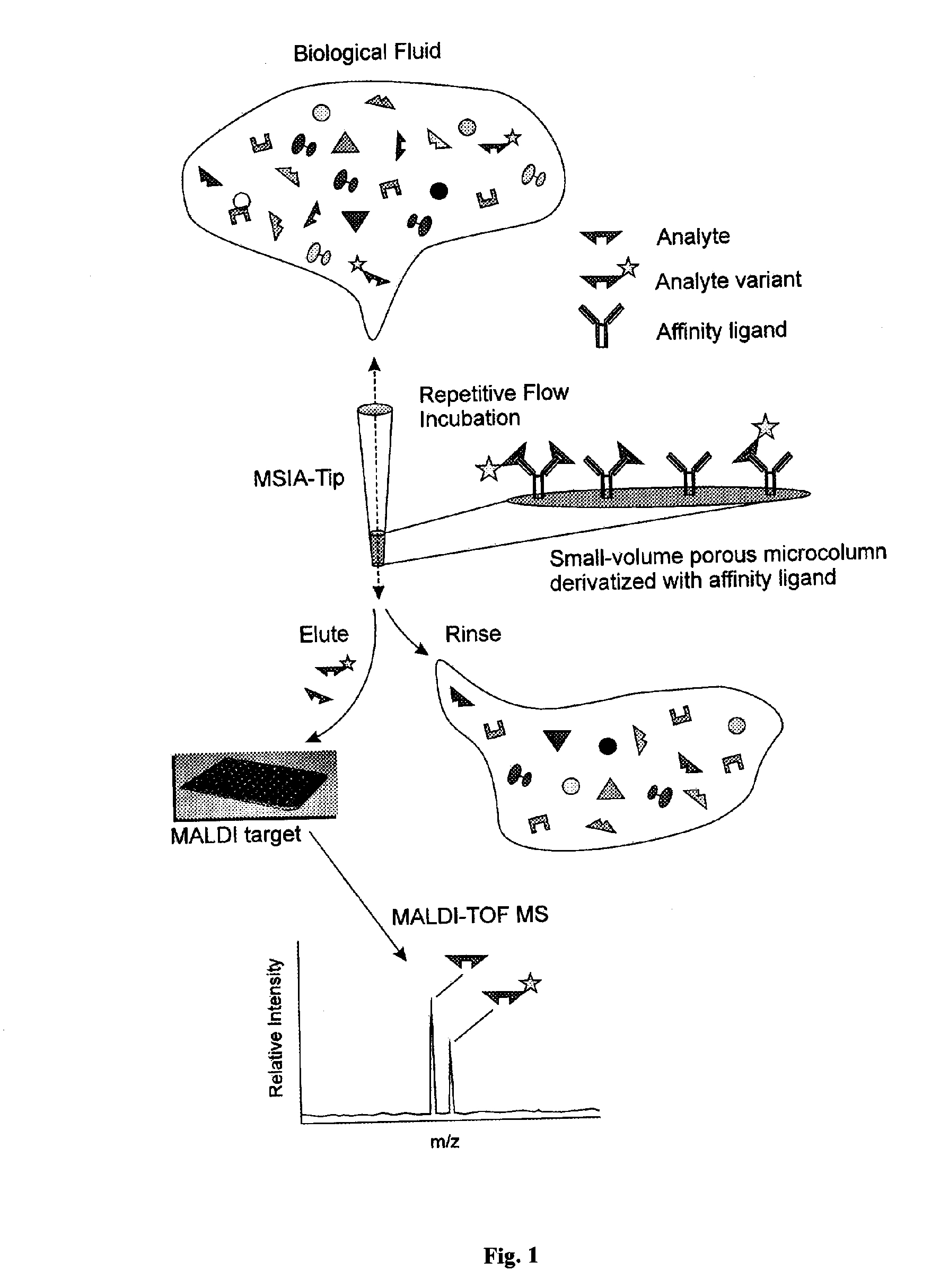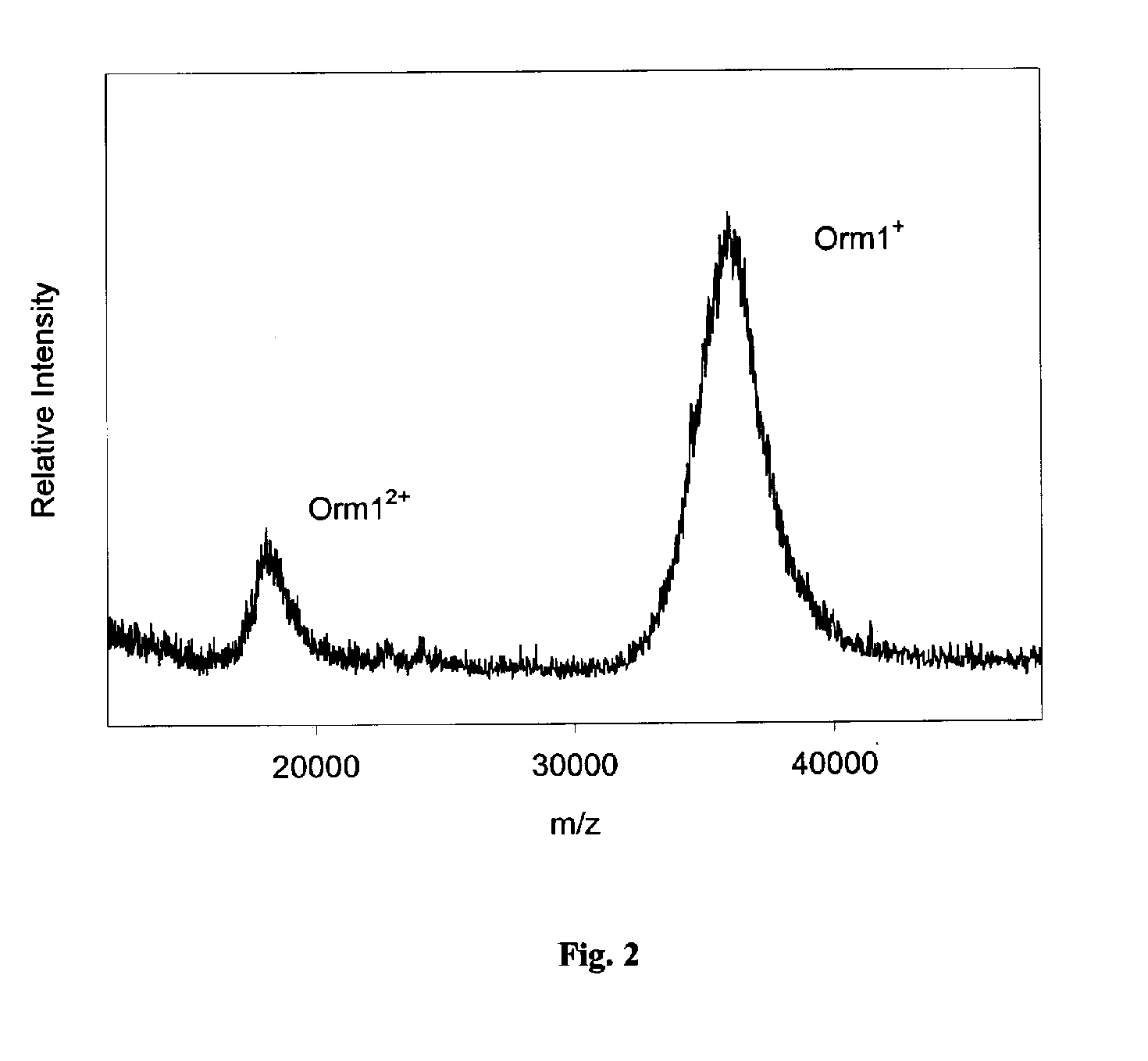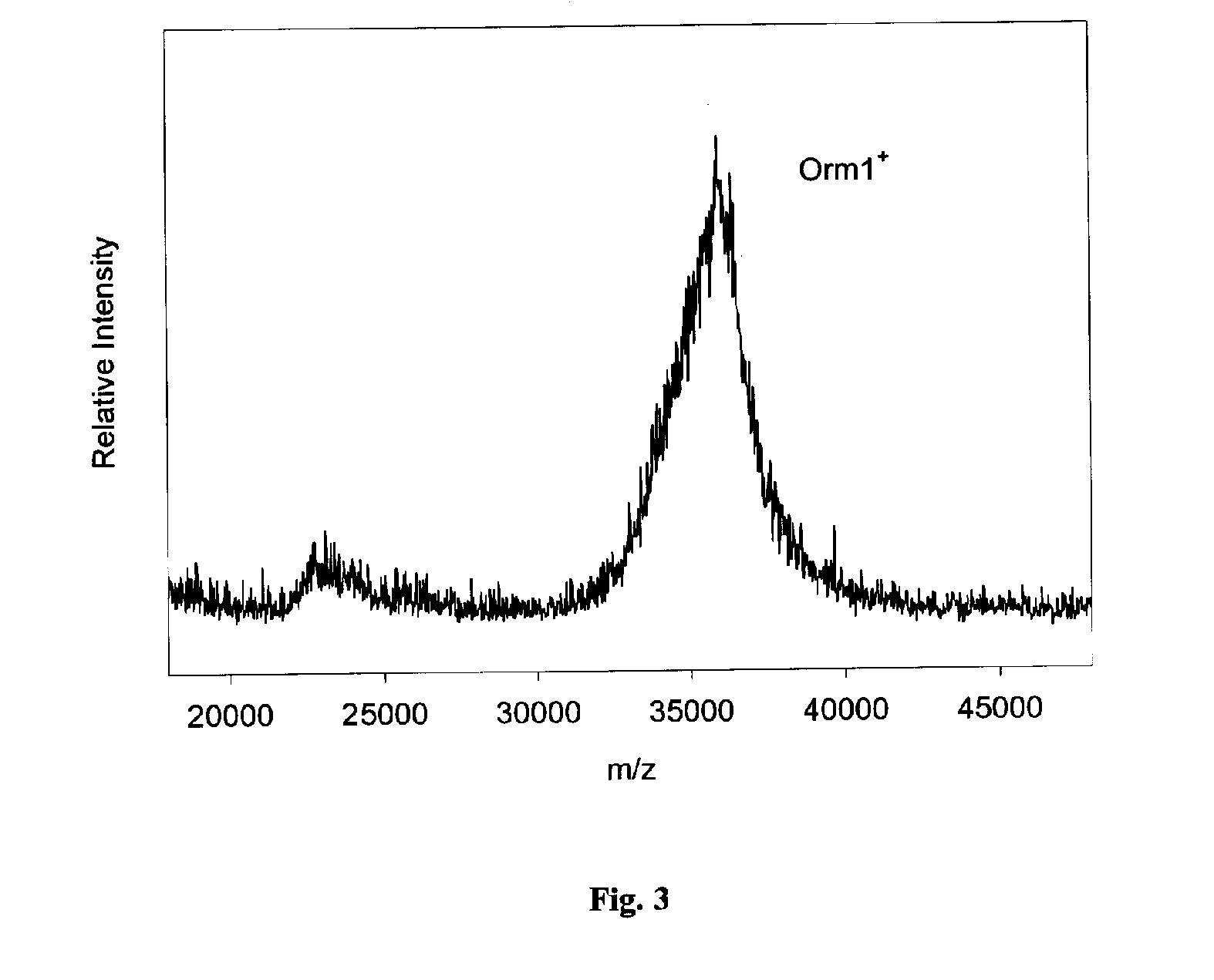Method and apparatus for mass spectrometric immunoassay analysis of specific biological fluid proteins
a technology biological fluid protein, which is applied in the field of mass spectrometric immunoassay analysis of specific biological fluid protein, can solve the problems of loss of the ability of the approach to be a discovery tool when applied, the complexity of the biological media, and the inherent challenges of analysis
- Summary
- Abstract
- Description
- Claims
- Application Information
AI Technical Summary
Benefits of technology
Problems solved by technology
Method used
Image
Examples
example 1
General MSIA Method
[0051] The general MSIA approach is shown graphically in FIG. 1. MSIA-Tips contain porous solid supports covalently derivatized with affinity ligands that are used to extract the specific analytes and their variants from biological samples by repetitively flowing the samples through the MSIA-Tips. Once washed of non-specifically bound compounds, the retained analytes are eluted onto a mass spectrometer target using a MALDI matrix. MALDI-TOF MS then follows, with analytes detected at precise m / z values. The analyses are qualitative by nature but can be made quantitative by incorporating mass-shifted variants of the analyte into the procedure for use as internal standards.
[0052] With regard to the proteins listed in the following EXAMPLES, mass spectrometric immunoassays were performed in the following general manner (additional methodologies specific to each protein are addressed when needed in the Examples):
[0053] The MSIA-Tips used in urine and blood analyses ...
example 2
Orosomucoid 1 (ORMI)
[0058] Orosomucoid 1 (ORMI) is a heavily glycosylated (−45% carbohydrate content) serum protein that has been indicated as a putative biomarker for a number of inflammatory (acute-phase) ailments. ORMI exhibits large heterogeneity in structure due to the heterogeneity of the carbohydrate chain and genetic polymorphisms. FIG. 2 shows the results of ORM1-MSIA performed on the plasma of a healthy individual. Briefly, a 50 μL sample of whole blood was collected from a lancet-punctured finger using a heparinized microcolumn, mixed with 200 μL HBS buffer and centrifuged for 30 seconds (at 7,000 RPM, 3000×g) to pellet the red blood cells. A 200 μL volume of the supernatant was then subjected to MSIA by repeatedly (50 times, 100 μL each time) aspiring and dispensing the medium through an anti-ORMI MSIA-Tip (made by linking polyclonal anti-ORMI antibody onto carboxymethyldextran (CMD)-modified solid support (within the MSIA-Tip) via 1,1′-carbonyldiimidazole (CDI)-mediate...
example 3
ALPHA-1-Antitrypsin (AAT)
[0060] Alpha-1-antitrypsin (AAT) is a moderately glycosylated glycoprotein having inhibitory action towards the serine protease trypsin. Additionally, AAT is highly polymorphic, existing in human populations in at least four major allelic variants. Aside from the high-frequency allelic variants, certain polymorphisms (point mutations) have been linked with emphysema and certain liver disorders. MSIA analysis of AAT from plasma, performed as described in EXAMPLE 2, shows a strong, broadened ion signal at m / z˜51,000 reflecting polymorphic and glycosylation variants (FIG. 4). The analysis of MT directly from the urine of the same individual (see protocol in Example 2) yields similar results with regard to parent ion signal of the AAT (FIG. 5). Interestingly, an additional signal at m / z˜23,900 is observed in the mass spectrum from the AAT-MSIA plasma analysis (FIG. 4). Although the identity of the 23.9 kDa signal has yet to be determined, a possible candidate i...
PUM
 Login to View More
Login to View More Abstract
Description
Claims
Application Information
 Login to View More
Login to View More - R&D
- Intellectual Property
- Life Sciences
- Materials
- Tech Scout
- Unparalleled Data Quality
- Higher Quality Content
- 60% Fewer Hallucinations
Browse by: Latest US Patents, China's latest patents, Technical Efficacy Thesaurus, Application Domain, Technology Topic, Popular Technical Reports.
© 2025 PatSnap. All rights reserved.Legal|Privacy policy|Modern Slavery Act Transparency Statement|Sitemap|About US| Contact US: help@patsnap.com



